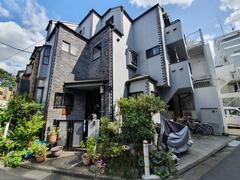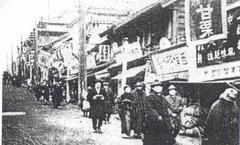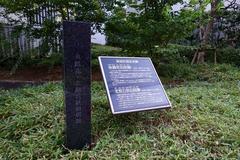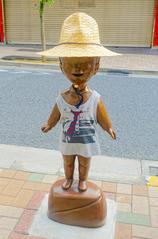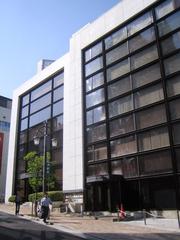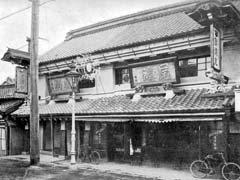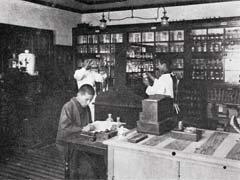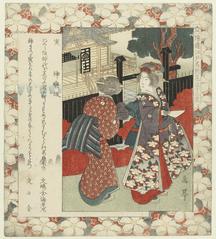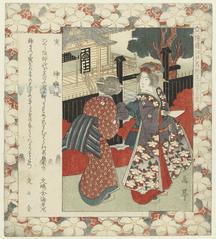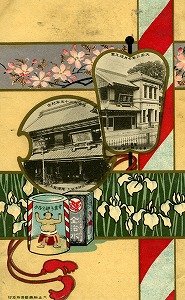
Kagurazaka Tokyo: Visiting Hours, Tickets, and Historical Sites Guide
Date: 14/06/2025
Introduction
Kagurazaka, located in central Tokyo, is a district where centuries-old traditions intertwine with modern-day vibrancy. Once a prominent hanamachi (geisha district), Kagurazaka preserves its Edo-period ambiance through narrow stone-paved alleys, historic shrines and temples, and exclusive ryotei (traditional restaurants). The area is also recognized for its French expatriate community, earning it the nickname “Tokyo’s Little Paris.” This guide provides a comprehensive overview of Kagurazaka’s historical evolution, cultural highlights, visiting hours, ticketing details, accessibility information, and must-see attractions, ensuring visitors enjoy a rewarding journey through one of Tokyo’s most atmospheric neighborhoods (Tokyo Updates; Go Tokyo; Tokyo Weekender).
Table of Contents
- Introduction
- Historical Overview
- Visiting Kagurazaka: Hours, Tickets, and Accessibility
- Travel Tips and Nearby Attractions
- Unique Features and Photographic Spots
- Notable Landmarks
- Cultural Significance and Events
- Preservation and Modern Identity
- Frequently Asked Questions (FAQ)
- Conclusion
- References
Historical Overview
Edo-Period Origins and Geisha Heritage
Kagurazaka’s origins trace back to the early Edo period, emerging as a strategic samurai residential zone and later developing into a hanamachi known for its vibrant geisha culture. The relocation of Zenkoku-ji Temple in 1792 catalyzed the area’s transformation into an entertainment hub, with theaters and festivals drawing crowds. Many of Kagurazaka’s winding yokocho alleys, such as Hyogo Yokocho, remain largely unchanged, still lined with historic machiya townhouses and ryotei (Japan Talk; TokyoTreat).
Meiji Era to Modern Day
During the Meiji Restoration, Kagurazaka transitioned from a samurai enclave to a commercial and cultural center, with the opening of Iidabashi Station accelerating its growth. The area survived the Great Kanto Earthquake of 1923 and, despite damage during WWII, bounced back as a lively entertainment and shopping district. Kagurazaka’s French influence grew from the late 20th century, resulting in a cosmopolitan mix of Japanese and European establishments (Tokyo Updates; Go Tokyo).
Visiting Kagurazaka: Hours, Tickets, and Accessibility
Visiting Hours
Kagurazaka is a public neighborhood and can be visited any time. Most shops, eateries, and attractions operate between 10:00 AM and 9:00 PM. Temples and shrines may have specific opening times:
- Zenkoku-ji Temple: 9:00 AM – 5:00 PM
- Tokyo Daijingu Shrine: 6:00 AM – 5:00 PM
- Akagi Shrine: 9:00 AM – 4:30 PM
Check individual venues for up-to-date hours, especially during holidays or special events.
Tickets and Reservations
- General Access: No ticket required to stroll Kagurazaka’s streets, alleys, or visit most shrines and temples.
- Museums and Gardens: Some attractions, such as the Natsume Soseki Museum or Koishikawa Korakuen Garden, charge an entrance fee (typically around 300 yen).
- Geisha Performances and Ryotei: Advance reservations are required for private geisha performances or fine dining experiences at ryotei.
Accessibility
Kagurazaka’s hilly terrain, stone-paved streets, and narrow alleys are part of its charm but may present challenges for those with mobility impairments. Main thoroughfares are more accessible, while many side streets are steep or involve stairs.
Getting There
- By Train:
- Kagurazaka Station (Tokyo Metro Tozai Line)
- Iidabashi Station (JR Chuo Line, Tokyo Metro Tozai, Namboku, Yurakucho Lines, Toei Oedo Line)
- Ushigome-Kagurazaka Station (Toei Oedo Line)
Travel Tips and Nearby Attractions
- Wear comfortable shoes due to uneven pavement and inclines.
- Best time to visit: Evenings and weekends for a relaxed, car-free experience on Kagurazaka-dori (main street pedestrianized on weekends 12:00–19:00).
- Nearby Sites: Koishikawa Korakuen Garden, Imperial Palace East Gardens, Yasukuni Shrine, Tokyo Dome City.
Unique Features and Photographic Spots
- Historic Alleys: Hyogo Yokocho, Kenban Yokocho, and Kakurenbo Yokocho—perfect for atmospheric photos.
- Akagi Shrine: Modern architecture by Kengo Kuma.
- Zenkoku-ji Temple: Striking red-lacquered structure, especially lively during festivals.
- Canal Café: Alfresco dining with views of the Edo Castle moat, especially picturesque during cherry blossom season.
Notable Landmarks
- Zenkoku-ji Temple: A focal point of Kagurazaka’s spiritual and community life since 1792, hosting vibrant annual festivals (Tokyo Updates).
- Akagi Shrine: Blending traditional Shinto with modern design, features a community plaza and café (TokyoTreat).
- Tokyo Daijingu Shrine: Known for its association with love and marriage.
- Ayumi Gallery: Recognized cultural property, hosting rotating art exhibitions.
Cultural Significance and Events
Festivals
- Kagurazaka Matsuri (late July): Features Awa Odori dance, Hozuki (ground cherry) market, and traditional street food (Japanistry).
- Machi Tobi Festa (autumn): Two weeks of tea ceremonies, concerts, and the playful Bake Neko (Monster Cat) Festival.
- Kagurazaka Street Stage O-edo Tour (May): Traditional performing arts in open-air venues (Arts Council Tokyo).
Living Geisha Tradition
Kagurazaka remains home to one of Tokyo’s few active geisha communities, with performances and banquets available through reservation or during public events (Ninja Kotan).
Preservation and Modern Identity
Kagurazaka’s enduring appeal lies in its careful balance between heritage and innovation. Local businesses and community groups work together to maintain historic architecture and celebrate traditional festivals, while embracing multiculturalism through its lively French dining scene and international boutiques (Japan Talk; TokyoTreat).
Frequently Asked Questions (FAQ)
Q: What are Kagurazaka’s visiting hours?
A: The district is open to the public all day; most shops and restaurants open 10:00 AM–9:00 PM.
Q: Do I need tickets or reservations?
A: No tickets for general exploration. Some attractions or experiences (museums, geisha performances, ryotei) require fees and reservations.
Q: How accessible is Kagurazaka?
A: Main streets are fairly accessible; side alleys can be steep and uneven.
Q: When can I see geisha?
A: Early evenings, especially on weekdays, geisha may be seen heading to appointments in the alleys.
Q: Are guided tours available?
A: Yes, walking tours on history, cuisine, and geisha culture are available—advance booking recommended (Tokyo Cheapo).
Conclusion
Kagurazaka is a microcosm of Tokyo’s ability to harmonize tradition and progress. Visitors can stroll atmospheric alleys, savor Japanese and French cuisine, experience vibrant festivals, and witness living geisha traditions. With its convenient location, accessible attractions, and rich cultural programming, Kagurazaka is a must for travelers seeking an authentic Tokyo journey.
For deeper insights, guided tours, and real-time updates, download the Audiala app and follow our blog and social media channels.
References
- Tokyo Updates
- Japan Talk
- TokyoTreat
- Japanistry
- Go Tokyo
- Michelin Guide
- Savor Japan
- Ninja Kotan
- Tokyo Cheapo
- Arts Council Tokyo

